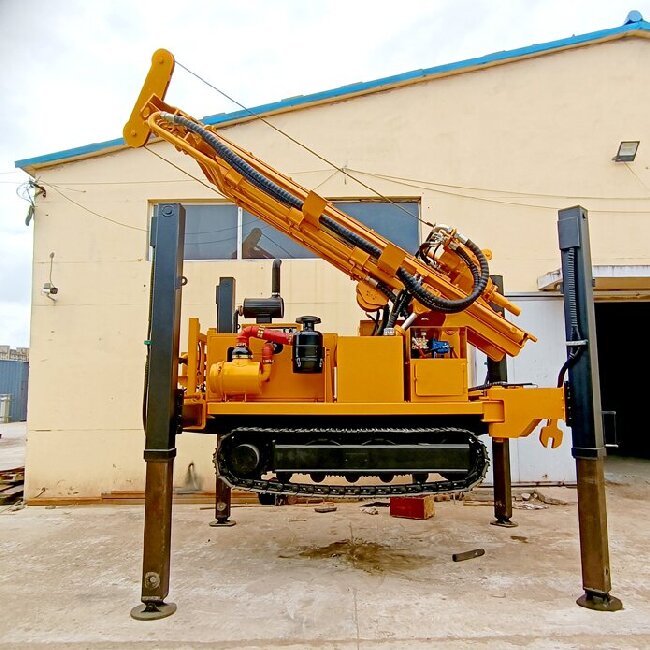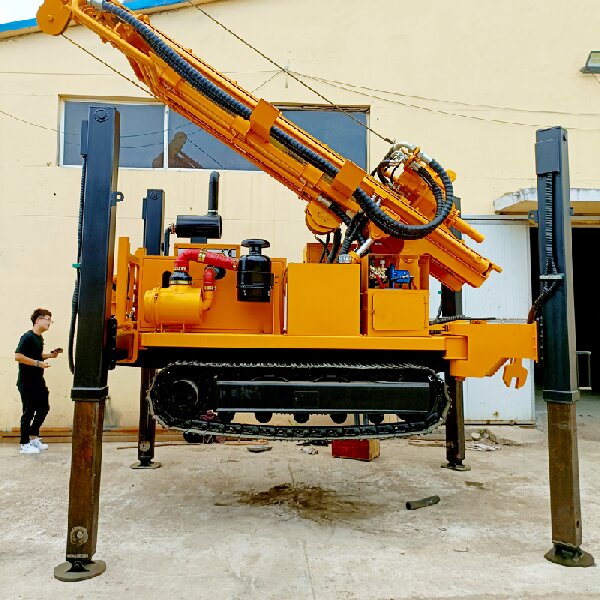The three main reasons for drill pipe sticking in water well drilling rigs in 2025
Stuck pipe is one of the most common and severe downhole problems in water well Drilling Rig. It doesn't just cause downtime and massively increase drilling costs; it can lead to damaged or scrapped drilling tools, and even lost wellbores, directly threatening the project's economic viability and safety. Even as we enter 2025, with technology and equipment becoming increasingly smart, stuck pipe issues are still a major challenge.
Here is a systematic breakdown of the causes, based on current drilling environments and technological characteristics:

I. Geological Conditions and Wellbore Factors
1. Wellbore Collapse and Sloughing:
Cause: The wellbore becomes unstable when drilling through loose, high-angle, or swelling clay formations.
2025 Update: As we develop deeper wells in complex urban and remote areas, we're encountering more challenging geology. This demands superior mud chemistry and more precise casing running timing.
2. Cuttings Bedding/Packing:
Cause: Drilling too fast, coupled with insufficient mud flow rate or poor carrying capacity, causes a large volume of cuttings to pile up at the bottom or in narrow spots, creating a blockage.
2025 Update: High-performance rigs drill faster, but if the mud circulation system and operational discipline don't keep up, it ironically makes cuttings accumulation more likely.
3. Hole Shrinkage and Irregular Geometry:
Cause: The formation flows plastically, the drill bit wears down, or the drill string vibrates, leading to an uneven hole.
Result: Tool joints or stabilizers get mechanically wedged (stuck) when pulling the drill string out.
II. Drilling Fluid Performance Issues
1. Excessive Fluid Loss & Thick Filter Cake:
Cause: Solids in the mud form a filter cake on the wellbore wall. If the mud loses too much water (filtrate), this cake thickens, greatly reducing the available wellbore space.
Result: The drill pipe's contact area with the thick cake increases, creating enormous differential sticking forces, especially in low-pressure formations.
2. Imbalance in Mud Density and Rheology:
Cause: Mud density is too low to counterbalance formation pressure, leading to wellbore instability; or the mud's viscosity and yield point are insufficient, leading to poor cuttings transport capacity.
III. Equipment and Operational Errors
1. Tripping Speed Too Fast:
Cause: Rapidly pulling the drill string out (tripping out) creates a swabbing effect, lowering the bottom hole pressure, which can trigger wellbore collapse or an influx of formation fluid.
2025 Update: Automated/semi-automated rigs enable faster operation, but aggressively pursuing speed without experienced judgment of downhole conditions can easily cause an accident.
2. Extended Stagnation/Downtime:
Cause: Stopping the drill string for a long period due to equipment failure, waiting for tools, or making pipe connections.
Result: Cuttings quickly settle and pack around the bottom hole assembly, or the pipe gets "hugged" by a thick filter cake and wellbore shrinkage.
3. Improper Bottom Hole Assembly (BHA) Design:
Cause: Incorrect stabilizer sizing, or a lack of centralizers in critical areas, causing the drill pipe to rub and vibrate excessively, creating an uneven wellbore path (doglegs).
2025 Update: BHA design must be optimized in real-time using MWD/LWD (Measurement While Drilling / Logging While Drilling) data.

IV. Response and Prevention Strategies
1. Real-Time Mud Monitoring and Adjustment: Implement automated mud processing systems to continuously monitor parameters like density, viscosity, and fluid loss, ensuring the mud performance precisely matches the current geological environment.
2. Smart Drilling Parameter Optimization: Use rig data (torque, weight-on-bit, pump pressure) to dynamically control the Rate of Penetration (ROP), preventing excess speed that leads to cuttings buildup.
3. Standardized Tripping Procedures: Strictly adhere to tripping speed limits and perform a short circulation (cleanup cycle) before tripping to clear the hole of cuttings.
4. Routine Hole Cleaning and Monitoring: Perform "short trips" or "reaming/wiping" operations regularly to clear filter cake and residual cuttings from the wellbore. Use wellbore geometry tools for routine surveys to track hole shrinkage.
Conclusion:
In 2025, the key to preventing stuck pipe in water well drilling rig lies in integrated management and precise control. Operators must combine the use of advanced rig monitoring systems with a deep understanding of geological conditions and mud chemistry, while strictly adhering to best operational practices. Only this integrated approach can minimize the risk of stuck pipe and ensure efficient, safe water well drilling projects.
To learn more about Chinese water well drill rigs, click the link and contact us.
Contact us

